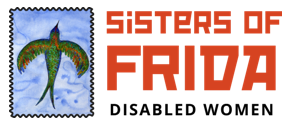

Bringing disabled women together, mobilising
and sharing through lived experiences
Disability and intersectionality: Multiple identities, cumulative discrimination
 Reblogged from Women’s Aid Scotland ‘Today we can stop it‘ with thanks!
Reblogged from Women’s Aid Scotland ‘Today we can stop it‘ with thanks!
American professor, Kimberlé Crenshaw, coined the term ‘intersectionality’ in 1989. Reni Eddo-Lodge, had an interview with her earlier this year where she explained why her law studies led her to intersectionality.
“That work started when I realised that African American Women were… not recognised as having experienced discrimination that reflected both their race and their gender. The courts would say if you don’t experience racism in the same way as a man does, or sexism in the same way as a white woman does, then you haven’t been discriminated against. I saw that as a problem of sameness and difference. There were claims of being seen as too different to be accommodated by law. That led to intersectionality, looking at the ways race and gender intersect to create barriers and obstacles to equality.”
Many people trip over this word but it means that women experience oppression or discrimination at several and varying levels. However there are more barriers to equality than race/ethnicity and gender. There is also disability, sexual orientation and class.
Disabled activists are on the rise and many of them are women engaged in the fight against austerity but disability activism has been mainly gender neutral. Women’s Aid outlines particular ways in which disabled women are vulnerable to physical, sexual, psychological and financial abuse – and makes the point that “Getting away from abuse is often harder for disabled women because access to help and support is often controlled by the abuser.” But not many disabled people organisations have focused on this abuse –there are exceptions of specialised organisations such as Stay Safe East in East London
Racism is embedded in the system and people who have never encountered it, can never understand how insidious it can be. And lack of representation of people of colour or BAME communities hold its own message – and that makes them feel excluded. Ableism is just as embedded in the system where many disabled are left trapped in their own or residential homes because they lack support in the form of care packages to enable to live as citizens in their communities and in society.
Disabled people are fighting for the continuation of the Independent Living Fund and access to Personal Independence Payment (PIP), Employment Support Allowance (ESA) and now, against the changes made to Access to Work.
The Convention of Rights for People of Disabilities (CRPD) recognises intersectionality for disabled women, Article 6 for Women with disabilities –
- States Parties recognize that women and girls with disabilities are subject tomultiple discrimination, and in this regard shall take measures to ensure the full and equal enjoyment by them of all human rights and fundamental freedoms.
For example, where a blind woman is denied access to information on the website of the Ministry of Health due to outright inaccessibility, this results in discrimination on the basis of disability only and not her gender as the site would be equally inaccessible to blind men; whereas a blind woman being denied access to family planning services is subjected to differential treatment based on both her gender and disability – and if she is actually an adolescent girl living in a remote indigenous community, clearly intersections of multiple aspects of her identity operate to exacerbate the disadvantage she faces in enjoying and exercising her rights.
(example from the IDA, Victoria Lee)
Many of us have multiple identities and we are impacted by discrimination cumulatively as disabled women. We need to recognise the intersectionality and work across strands of identity. As the women at Sisters of Frida’s event, Disabled Women’s Right to Occupy, agreed – we are the sum of identities, we cannot separate the strands but work as a whole difference.
written by Eleanor Lisney

I feel that discrimination against all ethnic groups a term i despise is more widespread today still and feel that governments in the western world from the most simple of things as a service questionaire asking are you white,Muslim etc etc what is a persons sexual orientation.
Frustration at every turn concerning discrimination and our failings to address this are only rebuffed by these people.